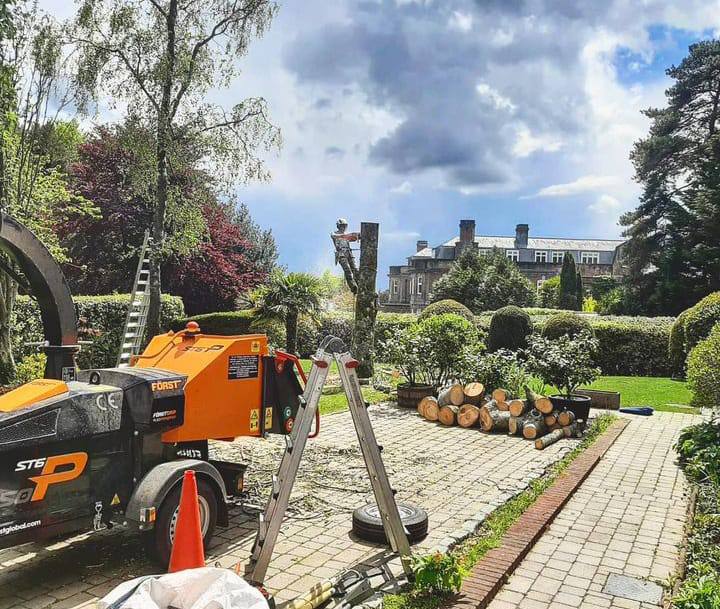Sculpting Nature: Unleashing Creativity with Tree Shaping Techniques
Introduction: In landscaping and outdoor design, trees are not merely fixtures of nature—they’re canvases waiting to be sculpted, shaped, and transformed into living works of art. At Wellingborough Tree Surgeons, we believe in the power of creative tree trimming to elevate outdoor spaces and imbue them with personality and charm. Join us as we explore the art of shaping trees and discover a world of imaginative trimming ideas that will breathe new life into your landscape.
1. Espalier Trees: Living Wall Art
Espalier is a time-honoured horticultural technique that involves training trees to grow flat against a support structure, such as a wall or fence. Arborists can create stunning living tapestries as focal points in gardens and outdoor spaces by carefully pruning branches and guiding growth along a predetermined pattern. Espaliered trees offer visual interest and practical benefits, such as space optimisation and privacy screening.
2. Topiary: Whimsical Forms and Shapes
Topiary is the art of shaping trees and shrubs into geometric forms, animals, or other fanciful shapes. From meticulously trimmed spheres and cones to elaborate animal sculptures, the possibilities are limited only by imagination. Topiary adds a touch of whimsy and sophistication to any landscape, whether a formal garden, urban park, or private courtyard. With skilled pruning techniques and a keen eye for design, tree surgeons can bring your topiary dreams to life.
3. Cloud Pruning: Ethereal Elegance in the Sky
Originating in Japan, cloud pruning (or “Niwaki”) is a style of tree shaping that mimics the organic forms of clouds and other natural elements. By selectively removing branches and foliage to create billowing, asymmetrical shapes, arborists can evoke a sense of ethereal beauty and tranquillity. Cloud-pruned trees make striking focal points in gardens, meditation spaces, and Zen-inspired landscapes, inviting contemplation and connection with nature.
4. Pleaching: Architectural Elegance and Structure
Pleaching is a technique that involves weaving and interlacing branches to create living hedges, arbours, and alleys. Arborists can fashion intricate patterns and architectural forms by carefully training trees to grow parallel to one another and intertwining their branches. Pleached trees add structure, privacy, and definition to outdoor spaces, serving as living walls that delineate boundaries and frame views. With skilful pruning and maintenance, pleached trees can become enduring features of the landscape, evolving and maturing over time.
5. Bonsai: Miniature Masterpieces of Patience
Without mentioning bonsai—the ancient Japanese art of cultivating miniature trees in containers, no discussion of creative tree shaping would be complete. Bonsai trees are meticulously pruned and trained to mimic the appearance of mature, full-sized trees, albeit on a much smaller scale. With patience, dedication, and a deep understanding of horticulture, bonsai enthusiasts can create living masterpieces that embody nature’s beauty and resilience in miniature form.
Conclusion: Shaping trees offers endless opportunities for creativity, expression, and experimentation in landscaping and outdoor design. Whether you’re drawn to the formal elegance of topiary, the organic grace of cloud pruning, or the architectural precision of pleaching, there’s a tree-shaping technique to suit every taste and style.
Call us on: 01933 823 193
Click here to find out more about Wellingborough Tree Surgeons
Click here to complete our contact form and see how we can help with your tree’s needs.

